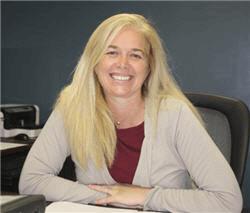Superpower Of Water Research Takes Flight

By Kevin Westerling,
@KevinOnWater

While two longstanding water research groups are discontinued, from them a bigger and better organization emerges. Get to know the changing face of water research through this Q&A with Melissa Meeker, CEO of the Water Environment & Reuse Foundation.
Say goodbye to a pair of the well-known names in water research, as the Water Environment Research Foundation (WERF) and the WateReuse Research Foundation have been merged into one entity, the Water Environment & Reuse Foundation (WE&RF). By combining forces, the new organization is better positioned to serve the water/wastewater industry and accelerate the development and adoption of innovative technologies, especially those pertaining to water reuse and resource recovery. That's the plan, at least.
In charge of seeing it through is Melissa Meeker, who assumed the mantle of CEO of WE&RF after serving the same role for WateReuse. Meeker spoke to Water Online about the impetus to consolidate, the impact the merger will have on water professionals, their communities, and the environment, and the critical mission that defines the new research juggernaut.
WERF and WateReuse each had distinct and important research portfolios. How will these projects be affected by the merger?
 Part of the beauty of this merger is that the two research portfolios actually complement each other very nicely. For this year, and for all existing research, those projects will continue as they would have if there wasn’t a merger. The agreements and contracts that are in place for WateReuse and for WERF won’t change.
Part of the beauty of this merger is that the two research portfolios actually complement each other very nicely. For this year, and for all existing research, those projects will continue as they would have if there wasn’t a merger. The agreements and contracts that are in place for WateReuse and for WERF won’t change.
It won’t be until 2017 when we bring the entire portfolio together, and we’re working with the [WERF] Research Council and the [WateReuse] Research Advisory Committee on the best way to move the research portfolio forward as we go into 2017.
We’ve got a few months to figure that out, which is great. We’re looking at a system that isn’t siloed by specific types of research, but one that integrates across. We’re really going to look at each project and how and where it fits in this cross-section of issues that we’re trying to push for the water industry. It’s a great opportunity to really blend the portfolios so that we can learn from research in each of the distinct areas.
Whereas WERF historically focused on resource recovery — nutrients and energy, some stormwater, but very little reuse — WateReuse was focused solely on the water. A specific RO [reverse osmosis] study on the WateReuse side may have been directly applicable on the energy side for WERF, so when you bring the two portfolios together you’ve got that full suite of resource recovery.
WE&RF has stated that its mission is to advance the concept of One Water? What does that mean for the industry?
I think the industry as a whole, especially given climate uncertainties and changes in our rain patterns, has really looked at resiliency and a smarter way to approach water supplies. We’ve got plenty of water resources — we just need to maximize and use the right source for the right uses. From our perspective, One Water means really pushing the envelope on those alternatives to traditional water supply — for industry, agriculture, or even for drinking water.
What key drivers can foster innovation and the adoption of a One Water approach?
A number of things are pushing the industry to be more innovative. The strongest push we have is regulatory.
Along the Eastern seaboard, it has traditionally been CSOs [combined sewer overflows] and impacts from stormwater or wastewater discharges downstream in terms of nutrients and ecological damage; or the over-pumping of groundwater, which has depleted our natural resources and caused challenges. Hence, they are regulatory drivers.
In the Pacific Northwest, it’s all about temperature and discharges and needing to have downstream flows. What do you do in between?
Another scenario is drought, which has really pushed the industry to look at innovation in terms of utilizing not only domestic wastewater as a drinking water source, but also stormwater.
The technologies that treat the water, no matter what they are, are the same around the country. The difference is in how we implement them. Some pretty progressive utilities in Southern California are looking at reuse as well as desalination and stormwater for supply.
If you put the systems in place and we can treat the water appropriately, there’s no reason why you can’t tap into every source to meet your local needs.
WERF previously partnered with another renowned water group, the Water Environment Federation (WEF), on the Leaders Innovation Forum for Technology (LIFT) program, which has done well to promote innovation. Will LIFT retain operations?
Absolutely. In fact we’re adding modules, and water reuse will be among the first added. The LIFT program has key areas that it focuses on, but there’s no reason why we can’t bring in additional areas to engage additional utilities with different interests.
It’s a great way to match certain technologies that haven’t been commercialized yet with utility needs — to actually pilot the projects and have utility operators go and view how certain technologies work in the field, at another utility, so that they can learn from that process to see if they want to implement it as well.
It creates a network to help utilities get the best information that they can — cutting-edge information — to help them do their jobs. LIFT will be one of our critical programs going forward, for certain.
What other benefits will the merger bring to the industry?
The consolidated focus on wastewater and stormwater and maximizing the recovery from those resources — whether it’s water, nutrients, energy, metals, whatever it may be — along with some desal, because the technologies are similar or the same — we’re going to be the best there is in that niche area.
Our goal is to provide the information needed to make sure policy is driven by science and not by gut reaction or politics or whatever else may drive a decision. It’s really about providing that scientific information, frankly, before any questions come up.
We want to be proactive and looking at the industry’s needs 10 to 15 years down the road, designing research programs now that can answer those future questions. And when they do get there, we’ll have the body of evidence to show that it’s profitable when you treat wastewater and stormwater appropriately, and that it can be monitored to ensure public health.
